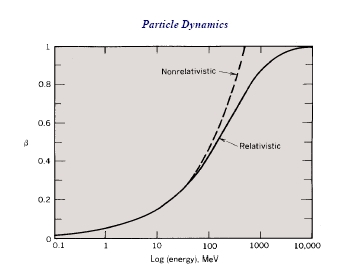
Is science on the right track
Web Master -
Speed of Light
The theory of Special Relativity deals with things moving at very high speeds and stems from work done on linear accelerators which accelerate charged particles up to speeds approaching the speed of light.
What is the Speed of Light Relative to?
Einstein’s concept of the Speed of Light makes no sense to me at all. Maybe it is because I have used my scientific knowledge in engineering that I look for common sense and logic. I cannot accept that light can travel at a constant speed to both source and observer, even if the two are travelling away from or towards each other. As far as I can see, light either travels at a constant speed relative to its source, or at a constant speed relative to a universal aether. The Michelson-
What changes at light speed?
Much of the thinking, concerning the speed of light and objects moving at very fast sub-
Now people assumed that if you were to send these electrons (or other types of charged particle) around in a circle, that every time they came past they would get another kick and the speed would continue to increase. Unfortunately, this didn’t happen. The closer that the particles got to the speed of light, the less the acceleration. So how is this explained?

This is what happens in a practical system, and there could be a number of ways to explain this. There is an equation that describes this curve.
If the basic Newtonian laws of motion P = mf (force = mass X Acceleration) were to be applied, then the broken line would apply. However, this doesn’t happen and the solid line is followed. So it looks as if it doesn’t matter how much force we apply, the speed of the particle never exceeds the speed of light and the closer it gets to the speed of light the smaller is the acceleration. So if we rearrange the acceleration equation we get acceleration = force/mass of the particle, or f = P/m. However, the actual acceleration is described as follows:_
f = P(1 – v/c)0.5/m where f is the acceleration, P is the force applied by the electric field, v is the velocity of the particle, m is the mass of the particle and c is the speed of light. So what causes this contraction term,
(1 – v/c)0.5 to be needed? And the answer depends on which terms in the equation can be considered to be constants, and this is where the relativists and I differ. They consider that it is all right to make constants into variables to get the results they want. Now I consider that the constants are time, by definition, mass and dimensions. I can see no logical reason why these should change just because something is moving very fast. So what is left? We have two terms that we accept are variables, f acceleration and the applied force P. Now we only assume that the applied force remains constant, but does it? The force is applied by creating an electric field, but what do we know about this field? We know that electromagnetic fields travel at the speed of light so it is reasonable to consider that the electric component also travels at the speed of light. So, as the particle accelerates, the force will reduce as the particle approaches the speed of the accelerating field, a bit like a slipping clutch which can only accelerate the load to its own speed and not beyond. So basically, we can say that the applied force is actually given by the following equation:-
Pv =P0(1 – v/c)0.5
where Pv is the force at velocity v and P0 is the force at rest velocity. This would be much more sensible an explanation that saying that time, mass and length all change with speed. The equation wouldn’t hold up if they all changed. But in spite of that, the relativists allow mass to change and approach infinity as the speed approaches that of light. If this were the case, then the kinetic energy of the particle would continue to increase as the speed approached light speed, and it is on this assumption that billions of pounds have been spent on building bigger and better cyclotrons, including the new one that broke shortly after it was commissioned. If I am right, then all this money has been wasted. However, they continue looking for mystical particles to justify spending more and more money. The latest is the God particle or Higgs Boson which they ‘think’ they might have found, but it hasn’t been actually verified yet. So now they are going to spend a lot more of our money beefing up the cyclotron to make it more powerful. Now if what we have said above is correct this will be a useless exercise. But never mind. They are looking for even more little Higg’s, so that’s all right then. Carry on spending our money playing with your big toy.
Another anomaly in light speed thinking occurs when dealing with cyclotrons. Particles are accelerated in opposite directions to double their relative velocities. But according to Relativists, they would still have a relative velocity under the speed of light -
The other parameter that they allow to change is time, saying that time slows down as the speed approached light speed. Now this can, supposedly, by demonstrated by putting a clock in a spaceship which moved away from the earth at a high speed. If the time on the spaceship is radioed back to the earth and compared with the time here, the time on the ship will gradually run slow with respect to earth time. This can be explained by the simple fact that there is a time delay between the signal being sent and being received on earth and there is no actual slowing of time on the spaceship.
Muons
These are subatomic particles that are produced when larger particles collide. There are many of these produced in the upper atmosphere where high energy particles from the Sun collide with atoms in the upper atmosphere. Now these can be detected at the earth’s surface, and indeed, hundreds of feet below the earth’s surface. When produced in a particle accelerator, muons have a life of approx. 1.5 microseconds, but the distance that they travel in this time would mean that they would have to travel faster that the speed of light. This is adequate proof, to my mind, that they can travel faster than light, and if you consider that the particles arriving from the Sun are travelling at close to the speed of light, and taking into account the conservation of momentum, it is reasonable to assume that the much smaller particles ejected would travel at a much greater speed.
However, the relativists argue that as particles cannot travel faster than light, time must slow down for them to allow them to cover the distance they are observed to cover. Furthermore, if they also invoked the change of mass with speed, the particles wouldn’t be able to achieve this speed in the first place. You can’t have it both ways.
No it seems obvious to me that these particles are actually travelling faster than the speed of light, and I can find no problem with this. Recently, an experiment with neutrinos being fired over long distances seemed to imply that they were going faster than light, but rather than say we were wrong, they look for reasons why they couldn’t actually have been travelling at that speed. Some scientist are now considering that the ‘Speed of Light Barrier’ can be broken, but still cling to some of the silly implications such as time travel at high speeds.
It seems to me that the speed of light problem can be explained quite simply. When particles are accelerated in an electric field, the accelerating force is moving at the speed of light so a particle accelerated by this field can only achieve the speed of the field, ie. The speed of light. If, on the other hand, a particle is accelerated by a particle collision, then it is quite reasonable to assume that a small particle might end up going faster than light. This is the case with the muons. The basic laws that should be applied are as follows:-
- Time is a constant.
- Mass is a constant and will not change with speed.
- There is no actual ‘light barrier’.
- All Relativistic anomalies can be explained using Newtonian Physics.
Time Travel
Experiments have been carried out to find whether there is, in fact, a change in the rate at which time passes when you travel very fast. Well we are limited the the speed of a jet aircraft so the difference would be very small.
An atomic clock was taken by air around the earth at a high speed and then compared with another static clock on the ground. There were differences, but they weren’t very convincing. If you consider the arguments applying to General Relativity, you will see that the permitivity of free space decreases as you move away from a large mass, like the Earth. This will have an effect on the workings of the atomic clock causing its rate to change slightly, and this will depend on the altitude attained by the aircraft and not the speed at which it is flying.
I think we can safely assume that any chance of time travel is out of the question.
Worm Holes
There are many other rather wild hypotheses such as parallel universes and worm holes that can take you from one side of the universe to the other in an instant. These are very interesting ideas but they are more at home in science fiction than science fact. It’s a pity, but true.